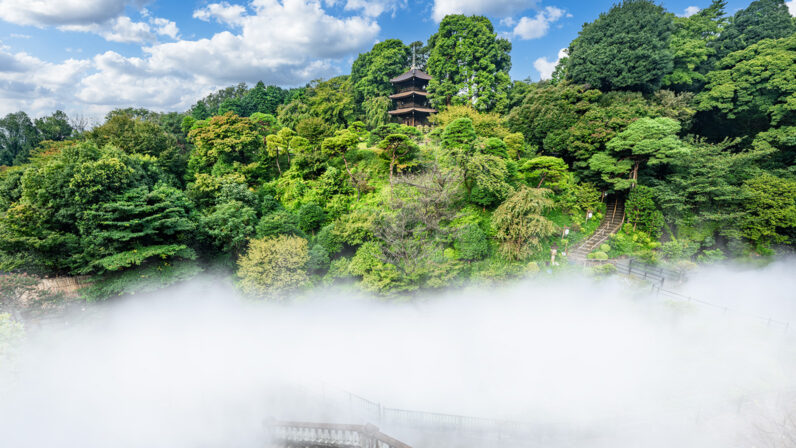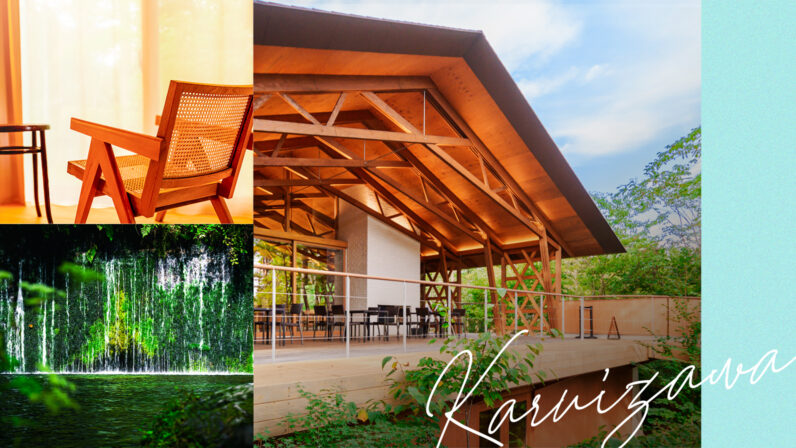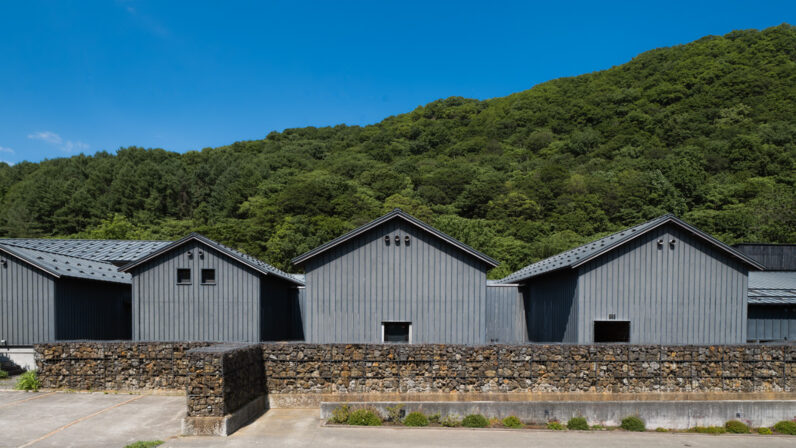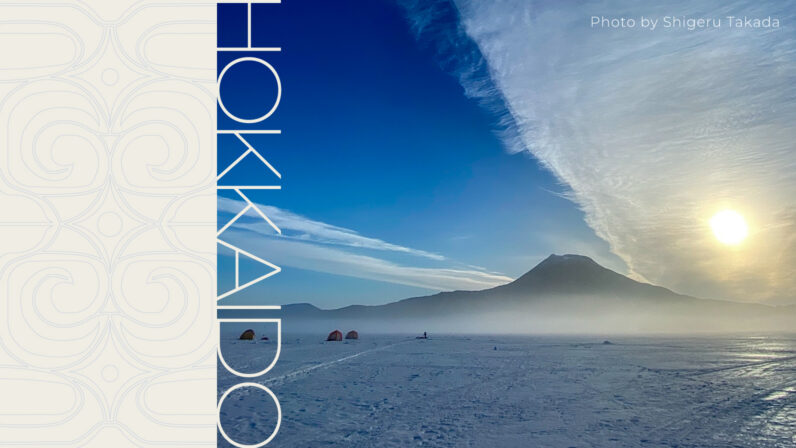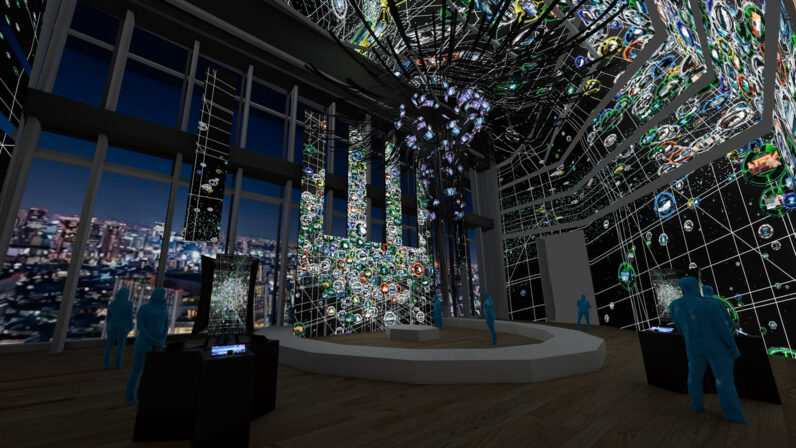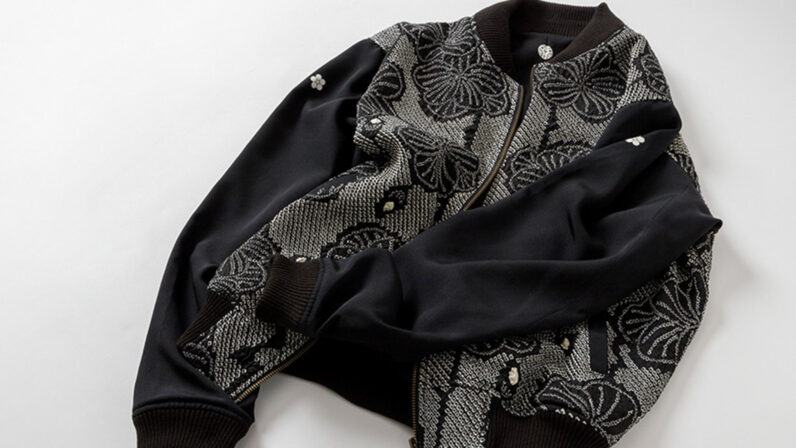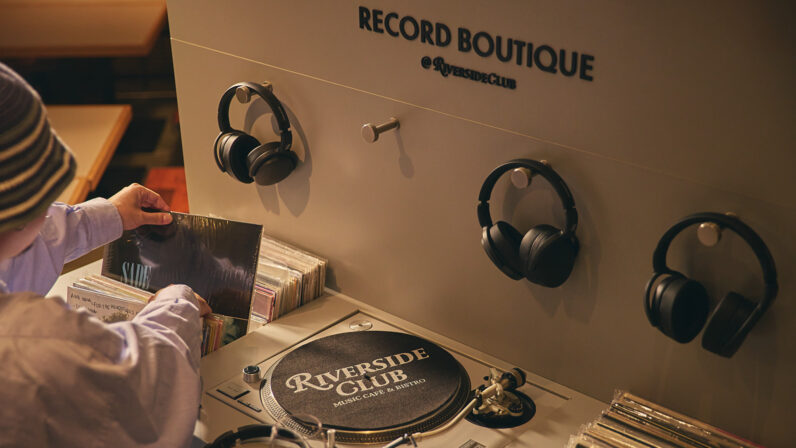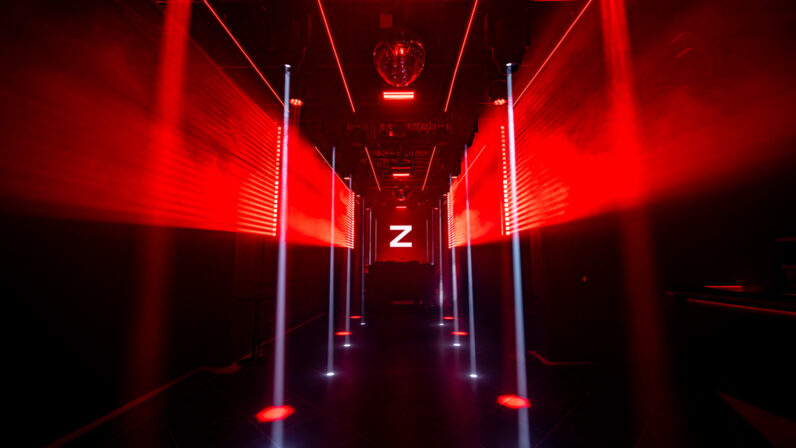The sake world is in the midst of a generational shift, driven by the dynamism of tradition and innovation. New and traditional sake compete on the global stage with their techniques, adding more fascination to the scene. Diving into this movement is Kiku no Tsukasa Brewery, the oldest sake brewery in Iwate Prefecture. With inherited traditional skills and a brewery at the forefront of innovation, it’s one to closely watch.
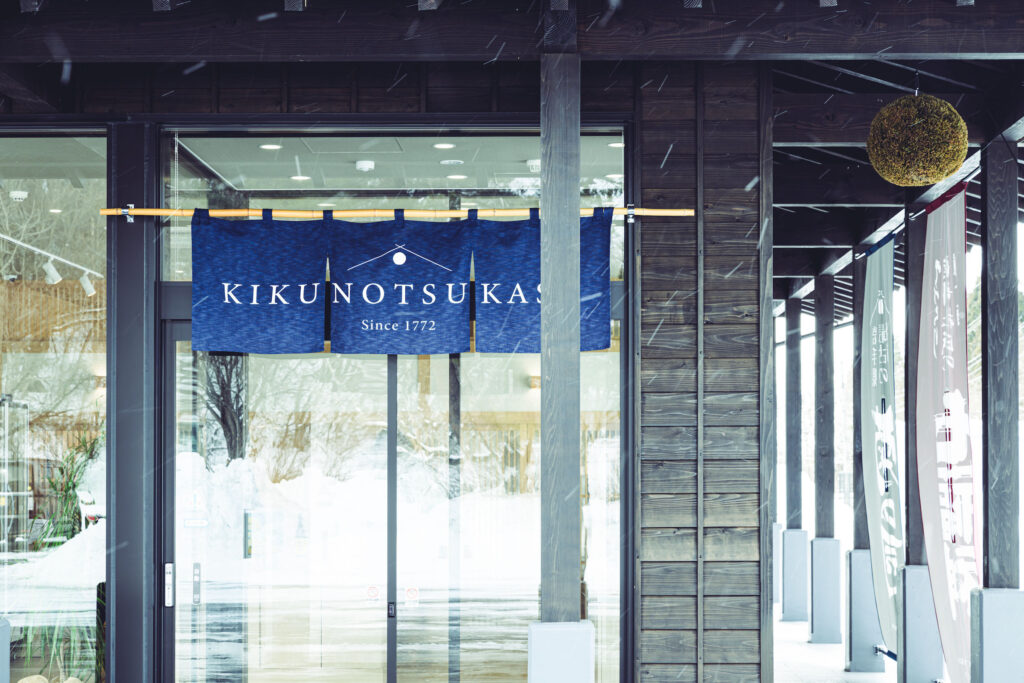
The evolving sake landscape
It is said that wine, boasting a history of 10,000 years, underwent a transformative period around the 1970s, give or take ten years. The emergence of influential journalists with global reach, coupled with the successive discovery and innovation of established wine regions and production methods during this time, suggests that these developments were not merely coincidental. Perhaps it was around this time that wine transitioned from being local specialties to international commodities.
It could be theorized that the sake industry’s decline starting from 1973 was related to these changes. Perhaps sake couldn’t adapt to the global shifts happening around this time?
It wasn’t until around 2000 that a change finally came to sake, which had dwindled to a quarter of its peak. Alongside Japanese cuisine, Japanese sake began to be discovered abroad as a high-quality brewed beverage. The establishment of the sake division at the International Wine Challenge (IWC) in 2007 symbolized this shift.
Even though establishing new startups was nearly impossible, stories of heroism emerged, where individuals or groups passionate about sake purchased struggling or dormant breweries from among the approximately 1,500 existing sake breweries and revived them with fervor.
These heroes often emphasize key factors for their success, such as expanding into international markets and creating sake that resonates with wine culture, which seems to support the theory mentioned earlier.
Tracing back to the early 1600s in the Edo period, the tradition of Nambu Toji, known as one of Japan’s three greatest sake brewers and continuing to the present day, was inherited by Kiku no Tsukasa, the oldest sake brewery in Iwate Prefecture. In 2021, the brewery was taken over by a local company through a merger and acquisition (M&A) process, and from there, a grand saga began to unfold.
After claiming the highest honor with the IWC’s regional trophy, they quickly found themselves selling 30% of their production overseas, extending beyond the prefecture. Meanwhile, they closed the brewery they had operated for 80 years, relocating it entirely to the foothills of the majestic Mount Iwate.
Given their significant achievements in the sake industry, the swift and monumental transformation led to heightened anticipation for their next moves.
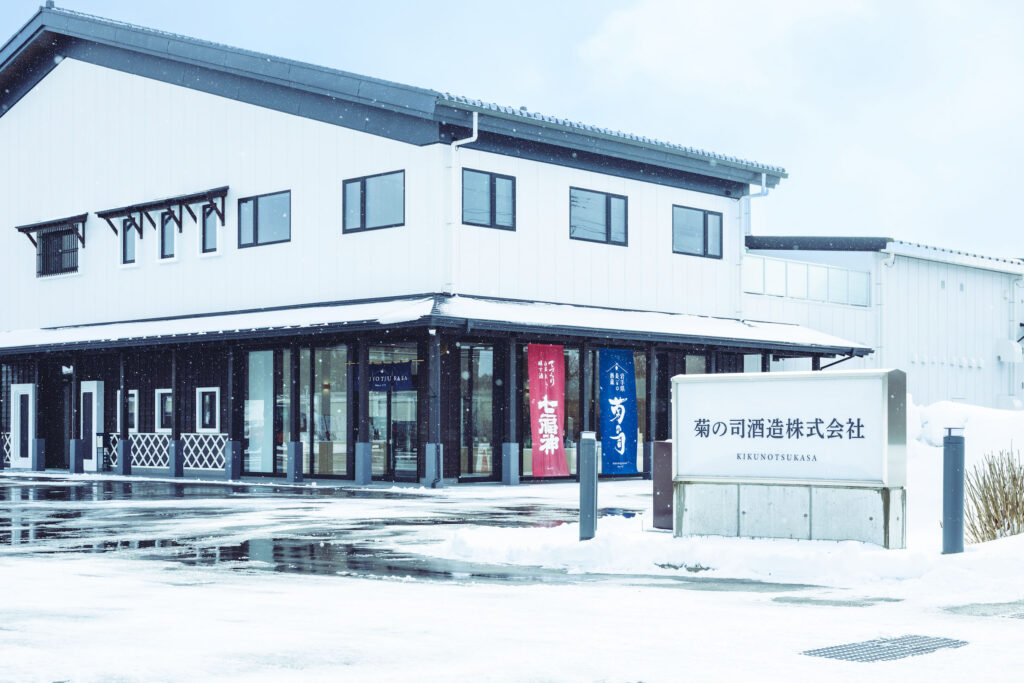
The new sake brewery and headquarters of Kiku no Tsukasa Brewery, which started operating in 2022.
A modest hero
The protagonist of this epic is a woman named Kiwako Yamada. I met her exactly a year ago, but at that time, I didn’t have the chance to properly converse with her as she was incredibly busy. Unlike the usual heroes of these kinds of stories, she was originally a novice in the world of sake, and by chance, she happened to become the guiding force of an established sake brewery. From there, she delved into the world of sake at an astonishing pace, working on improving the quality of sake, developing new sake varieties, restructuring the business, and expanding the market.
“I grew up in Morioka until I finished high school. Then, I landed a job at an IT venture company in Tokyo’s Roppongi area. However, with the onset of the pandemic, remote work became the norm. As time went on, my mother’s health declined, and without even thinking about work, I returned to Iwate to support my family” explained Yamada, reflecting on the beginning of her journey.
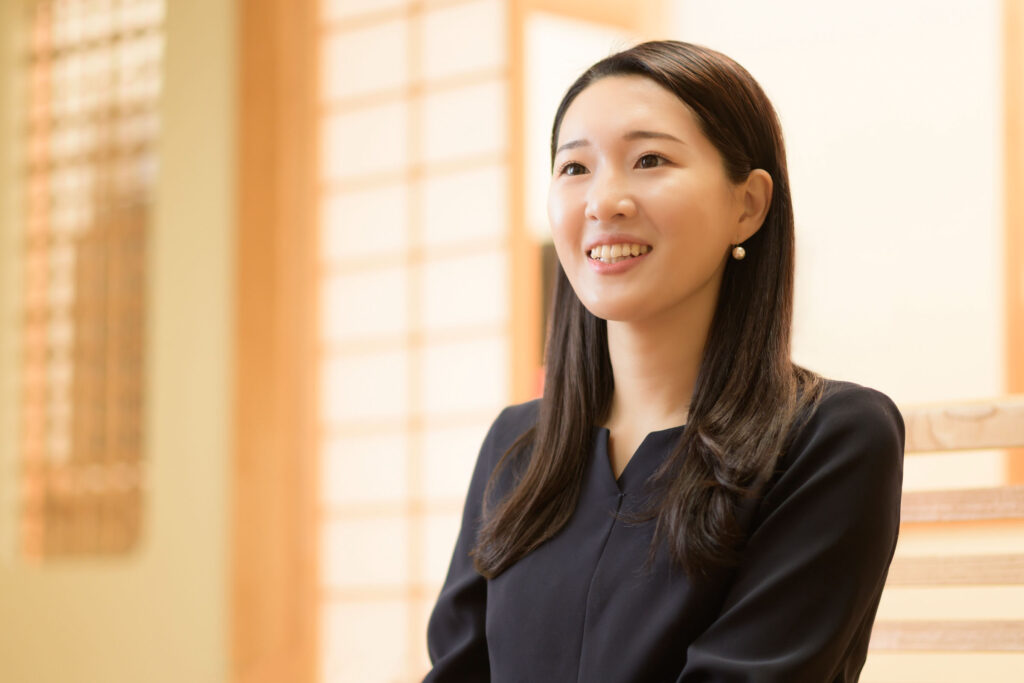
A year after meeting her I was finally able to ask her questions and learn about her story. She then continued…
“About six months later, my father, who works for the parent company, informed me about the succession plan for Kiku no Tsukasa Shuzou’s business. That’s when I volunteered to lend a hand. While my father is involved in management and attends meetings, I’m the sole member from the owner company who has been on-site at Kiku no Tsukasa Shuzou since the outset.”
The discussion of the M&A was initially brought up by a local bank. Yamada’s father’s company, called “Kouraku” initially declined the business succession, considering it beyond its capacity to handle a historical sake brewery worthy of being featured in textbooks. However, the bank didn’t back down either.
“We had several discussions, and considering that my grandfather had a fondness for a sake called ‘Iwategawa’ from Iwate in the past, it seemed fitting. Along with our company philosophy of supporting those who take on challenges, we decided to embrace this opportunity and pursue the endeavor.”
The brewery was located in the heart of Konya-cho in Morioka City. The building, which was 80 years old, had undergone multiple renovations but was deteriorating, showing signs of aging, and lacking modern standards in terms of usability and sanitation. Additionally, the working conditions were less than ideal. Yamada went on to detail the initial difficulties.
“The previous brewery was in a state where what should have been adjacent to it seemed to be located on the second floor of the building next to the neighboring one. It felt like navigating a three-story structure. Despite our intentions to renovate or install new machinery, we lacked architectural drawings. It took about six months to eventually find someone capable of redrawing them, but the completion of the drawings was estimated to take another year.”
In 2022, exactly one year later, Kiku no Tsukasa Shuzou would be celebrating its 250th year of sake brewing. Therefore, any disruptions to the brewing operations due to renovations would understandably cause concern among business partners.
“Taking all this into consideration we decided to close the brewery in Konya-cho and build a new one in a different location.”
Behind the succession
It was a daringly bold idea. Relocating the brewery would mean altering the very essence of sake by changing its foundational element, water. In the sake community, some even assert that the design of the brewery directly influences the character of the sake it produces. Moreover, renovating a sake brewery is no small feat, often requiring as much investment as building two or three small wineries. To embark on building a new facility would cost several times more.
However, the Yamadas forged ahead, establishing a new brewery in the town of Shizukuishi, Iwate Prefecture, resembling a precision machinery factory.
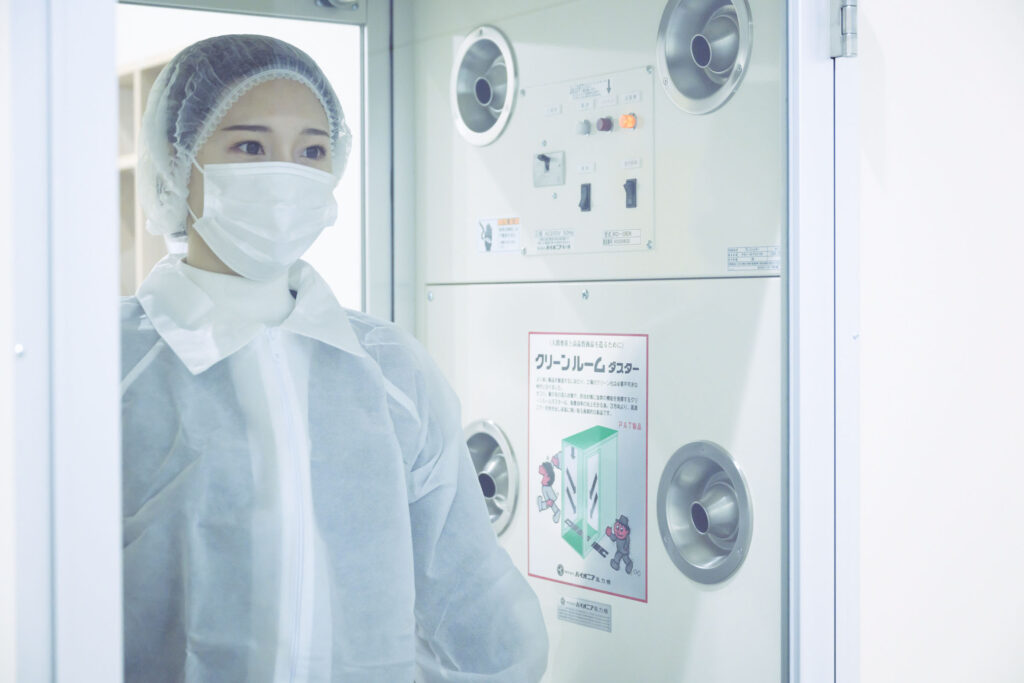
Before entering the brewery, thorough disinfection and showering in an air shower are necessary
“Our first task was to prove that even though the brewery has changed, the quality remains, and we can craft even better sake than before.”
Yamada viewed people as the heart and soul of Kiku no Tsukasa Shuzou. Despite the change in ownership, the brewery workers remained steadfast. Even when the discussion of full automation arose, the workers advocated for retaining the freedom of manual labor, and the value of human involvement in the brewing process. Similar to a sturdy crew and captain aboard a vessel, they symbolized the importance of human touch and expertise in the sake-making process, even in the face of potential technological advancements or changes in ownership.
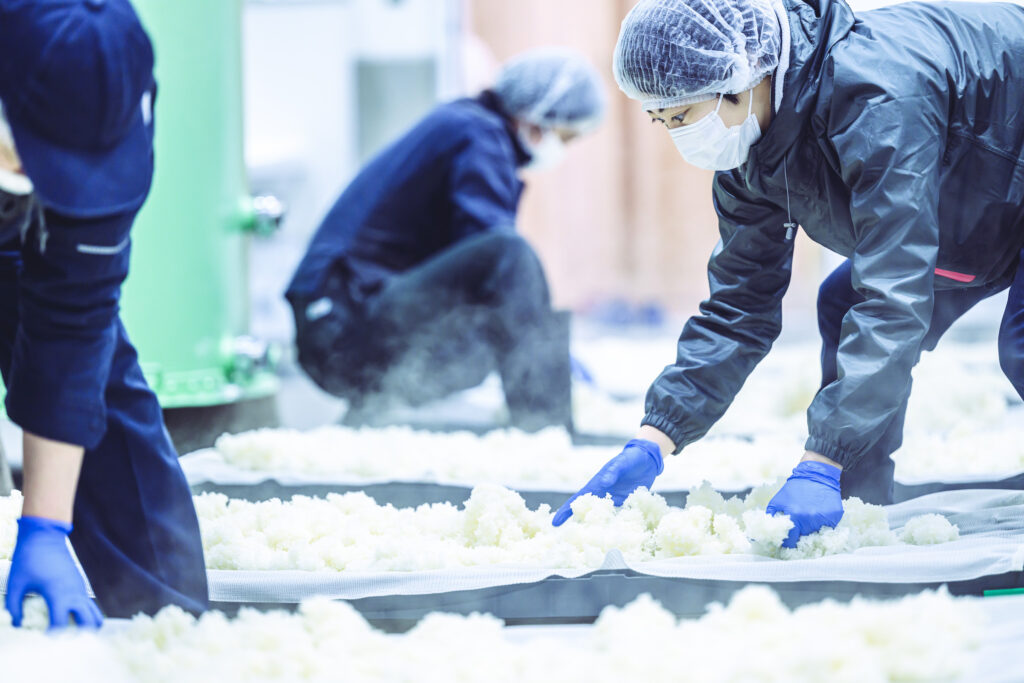
A key strength lies in their ability to flexibly switch between manual and mechanical work adjusting to production volume and circumstances.
“Well, it was quite enjoyable, but tough, you know?”
That’s how Masayuki Nishidate, known as the ship captain of Kiku no Tsukasa Shuzou, described his experience. With 30 years as a master brewer at Kiku no Tsukasa Shuzou, he shared his insights into leading the design of the new brewery.

Nishidate provides an explanation about the fermentation tanks. These custom-made tanks, coated with resin over steel, offer precise temperature control from the high temperatures at the beginning of fermentation to the low temperatures at the end.
“We’ve decided to centralize fermentation, pressing (jousou), and bottling operations in the brewery, minimizing travel distances and ensuring thorough temperature control to minimize air contact during transport. As a result it greatly reduces the risk of sake deterioration and bacterial contamination. However…”

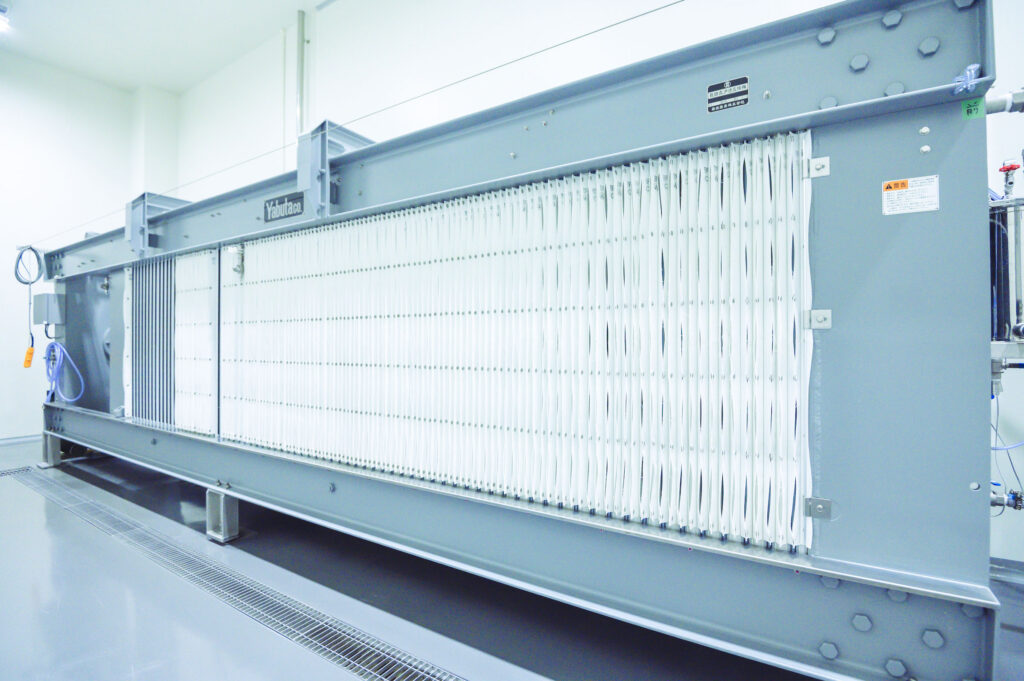
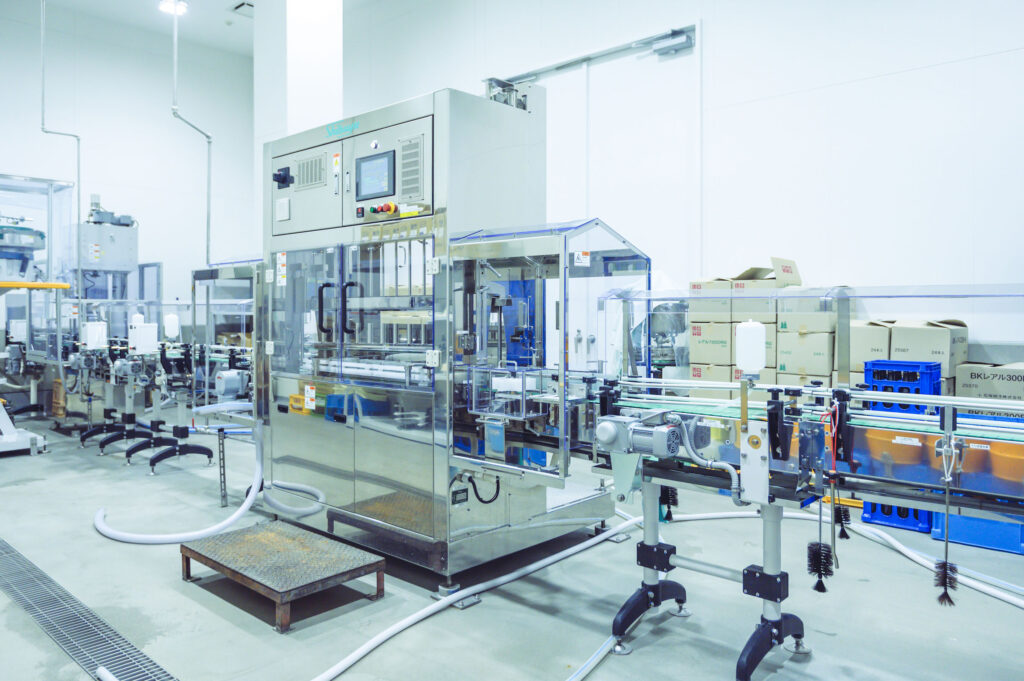
From the moromi (mash) making onwards, the pressing and bottling processes in the central part of the brewery have been consolidated. During this phase, the sake is hardly exposed to outside air.
“What about the rest? If we prioritize space, the koji room should be at the back, but considering the distance to transport the rice, it should be closer. Then again, if we do that, the workspace will become narrower…” It was clear that designing the brewery presented numerous challenges, with many critical decisions to be made.
The brewery that eventually resulted from these careful trials and errors is akin to a finely tuned instrument, where every component works seamlessly together to produce exceptional results. The brewery’s capabilities were undoubtedly fully utilized. Ultimately, the sake from Kiku no Tsukasa Shuzou remained unchanged despite the change in brewery, and if anything, it had become even better.
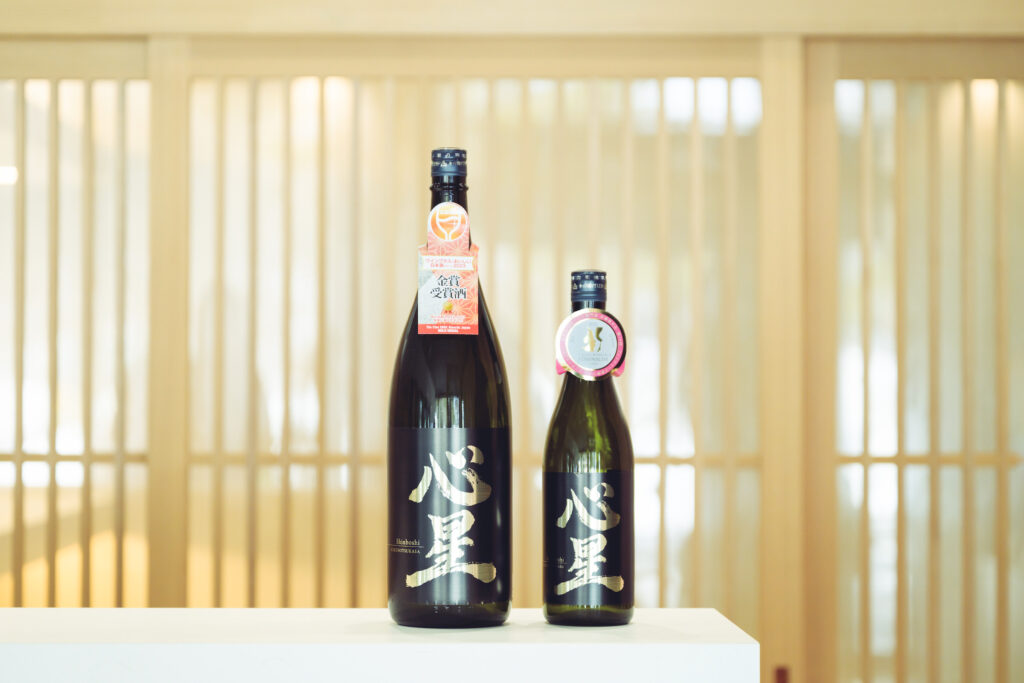
Kiku no Tsukasa Shuzou also won a gold rating at the IWC in 2019 for their Junmai Ginjo sake “Shinsei.” In 2022, they surpassed their previous achievement by winning the Iwate Trophy in the same category.
When asked if they’ve accomplished their full potential, Nishidate responded, “No, no, we’re far from finished. Once you reach this point, you discover a whole new set of challenges.”
Despite all the accolades, he remains humble. He believes there’s room for improvement and that they can create even better products, truly reflecting the spirit of a craftsman.
Collective effort
“This brewery is certainly my primary responsibility, but it’s a brewery created through everyone’s input.”
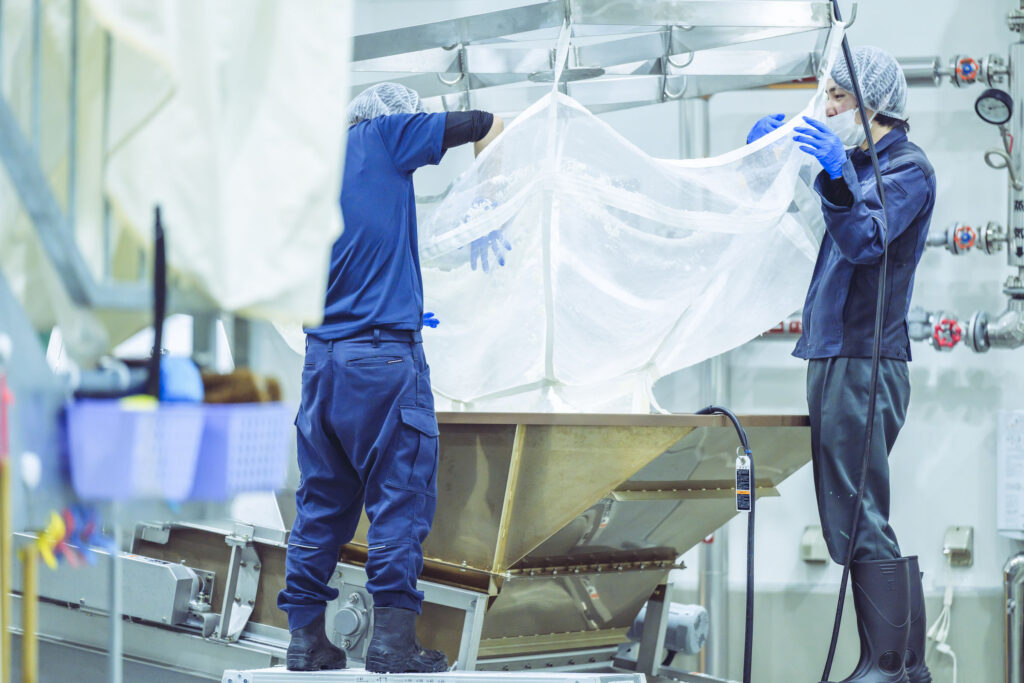
The new brewery minimizes manual labor, through streamlining pathways and the strategic deployment of machinery.
Another notable change, as pointed out by Nishidate, is the emphasis on teamwork within Kiku no Tsukasa Shuzou.
“It was previously an organization where information sharing as a collective was entirely absent.”
Yamada’s assertion that “inevitable miscommunication leads to business decline” isn’t unusual within a group of artisans. While they might be familiar with terms like continuous improvement or PDCA (Plan-Do-Check-Act), many artisans don’t grasp how these concepts can bring about change. However, Kouraku brought the practical approach of Japanese companies, and Yamada brought her experience from an IT venture company to Kiku no Tsukasa Shuzou. For Yamada to understand sake, it was essential for her to incorporate these experiences.
Some may assume that it would be bothersome for brewery workers to spend time on things like sales meetings or implementing platforms like Slack? Yet, upon further investigation, it seems the brewery workers perceive this as management listening to and respecting their opinions.
“We can share our thoughts with Yamada-san, and she also shares hers with us. So, while conflicts may arise, I believe it’s beneficial to have more clashes. By working through them, it feels like we’re all contributing to the process together,” Nishidate explains when discussing communication between Yamada and the team. “
However, some may wonder if it can ever become frustrating to constantly receive input, considering Nishidate’s expertise and Yamada being new to the sake industry. To that, he responds…
“Once I step outside this brewery, I’m simply a sake enthusiast like anyone else. There’s no distinction between professionals and amateurs. What matters is appreciating and engaging with sake sincerely as fellow human beings.”
Additionally, this organization seems to have shed light on the mysterious world of sake breweries for job seekers. Under Nishidate’s guidance, there is now a growing number of young people with diverse backgrounds joining the team. Among them, there are already individuals who play pivotal roles in sake production.
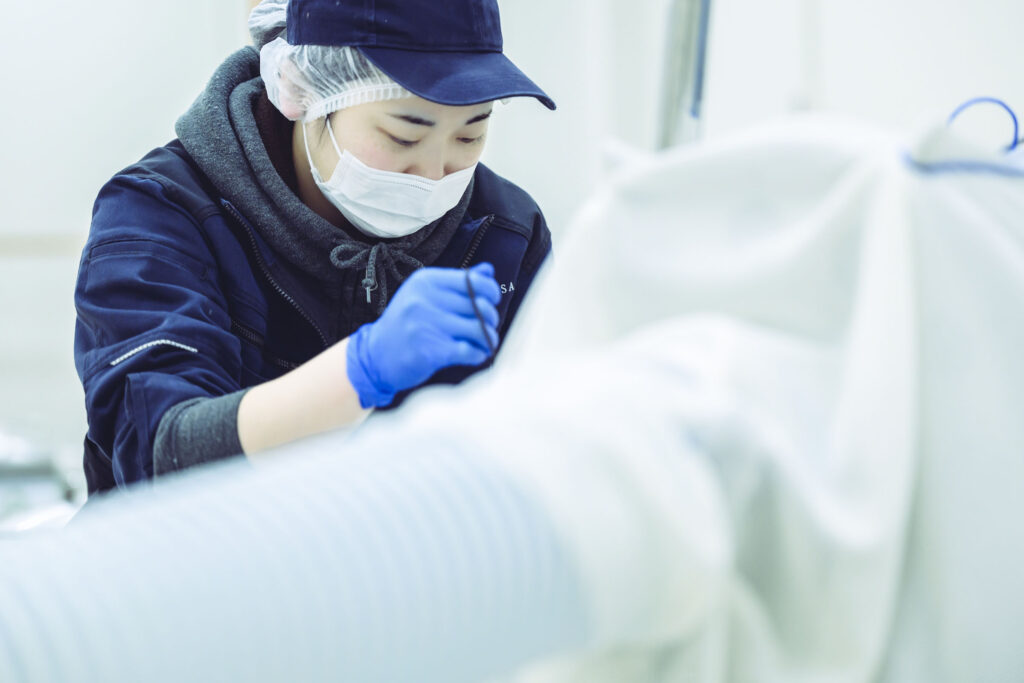
The Kiku no Tsukasa Shuzou team consists of a total of 25 members. It’s noteworthy that all of them are residents of Iwate Prefecture, and there is also a significant number of women among them.
And above all, what’s truly significant is that this new team has managed to produce exceptional sake once again.
The sake of Kiku no Tsukasa Shuzou
The sake that represents the new era of Kiku no Tsukasa Shuzou is called “Innocent.” This new Japanese sake offers a blend of complexity and elegance with a natural flavor profile, and seamlessly aligns with contemporary wine trends. This sake was born from the desire of Yamada, who was deeply impressed by the deliciousness of Kiku no Tsukasa’s freshly pressed sake immediately after the M&A. She sought to commercialize it and the brewery workers brought this wish to life.
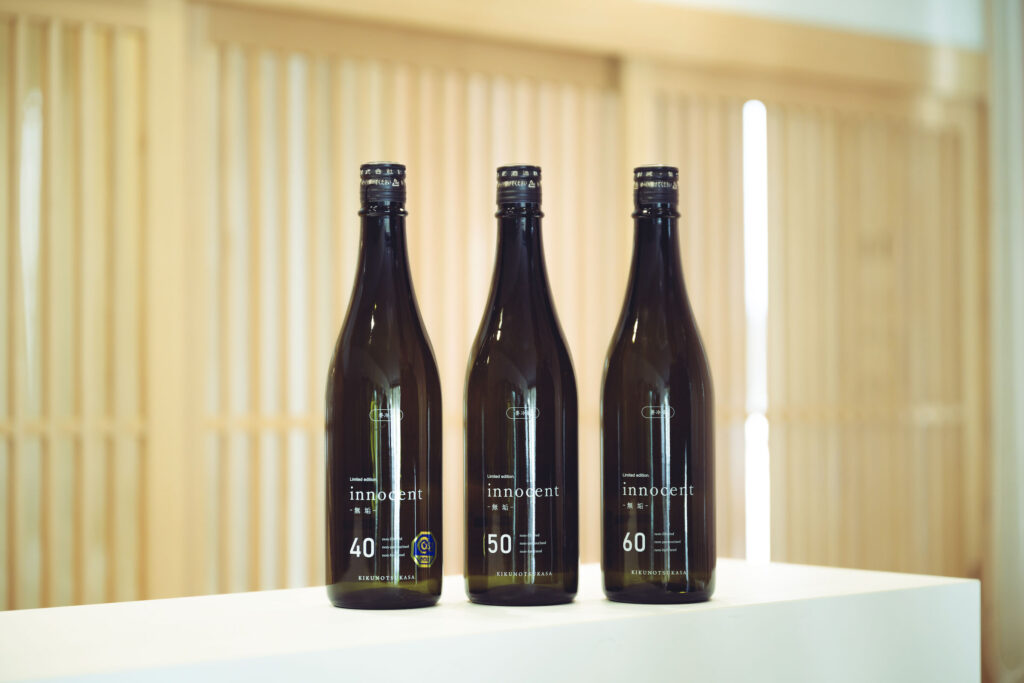
Innocent comes in three varieties, with rice polishing ratios of 40, 50, and 60. Either of the three would be a good start for a fine tasting experience.
Due to its extremely delicate nature, both the production and handling of this fresh sake are challenging. It requires being kept at low temperatures until consumption. Therefore, it’s only available through made-to-order production to ensure consistent quality upon delivery. In Tokyo, renowned establishments like the famed kaiseki restaurant “Azabu Saotome” and Michelin starred “Nishi-azabu Taku”, as well as hotels like Hotel Chinzanso Tokyo, have begun offering it.
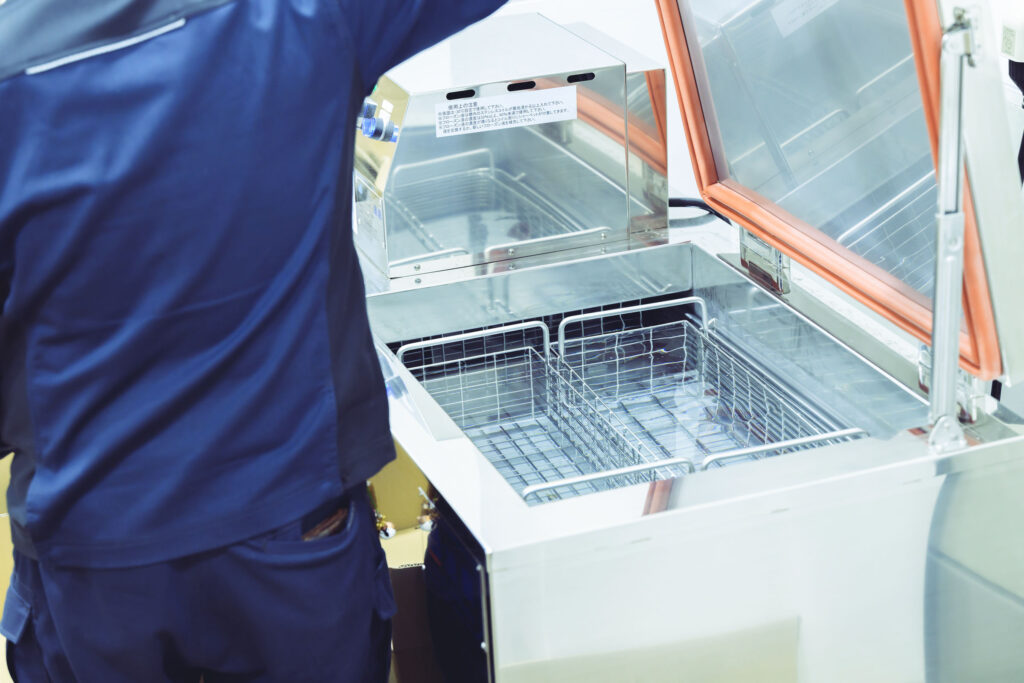
Kiku no Tsukasa Shuzou is extremely meticulous about temperature control throughout the entire brewing process, from rice management to shipment. Amazingly, “Innocent” has also begun being shipped frozen.
Given the meticulous selection process for this sake, it’s worth traveling to Iwate for it alone. Moreover, near the brewery in Shizukuishi, you’ll find the majestic Mt. Iwate, serving as a fresh water source with abundant nature, and rice fields where the sake rice is cultivated. Additionally, there’s also a studio where the renowned “Grand Seiko” mechanical watches, symbolic of exceptional human craftsmanship, are produced. These are some of the reasons and inspiration behind Kiku no Tsukasa Shuzou choosing Shizukuishi as its relocation destination.
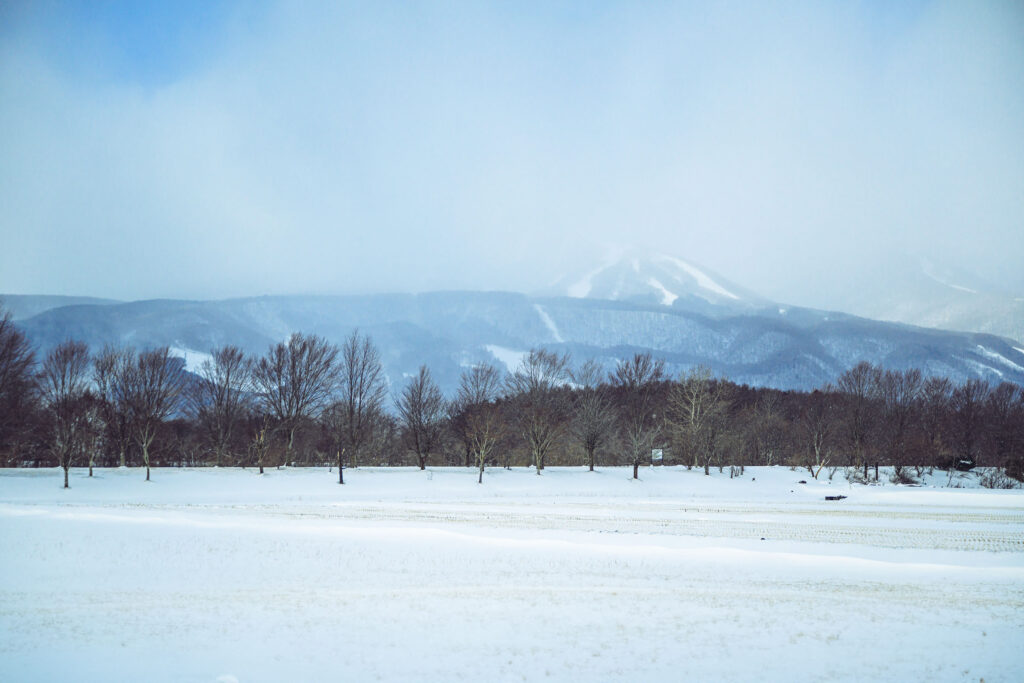
Iwate, blessed with both mountains and the sea, is also renowned as a treasure trove of ingredients. Pairing Innocent with local oysters offers a taste of the region not to be missed.
At this brewery, a variety of new sakes are being introduced following Innocent. “Shichifukujin ni gori” may appear cloudy, but it offers a sparkling champagne-like brilliance. “Junmai cho karakuchi shichifukujin” and “Shichifukujin Fuku Hibiki” are exceptional table wines; the former evokes the characteristics of “Chablis,” while the latter resembles “AC Bourgogne Côte d’Or.” For those desiring the complexity and elegance akin to a Grand Cru Classé, there’s “Kokoro-boshi,” the previous IWC gold award winner, now further refined. Alternatively, if you prefer a style reminiscent of “Saint-Émilion Grand Cru Classé”, consider “Shichifukujin 38 Junmai Daiginjo”.
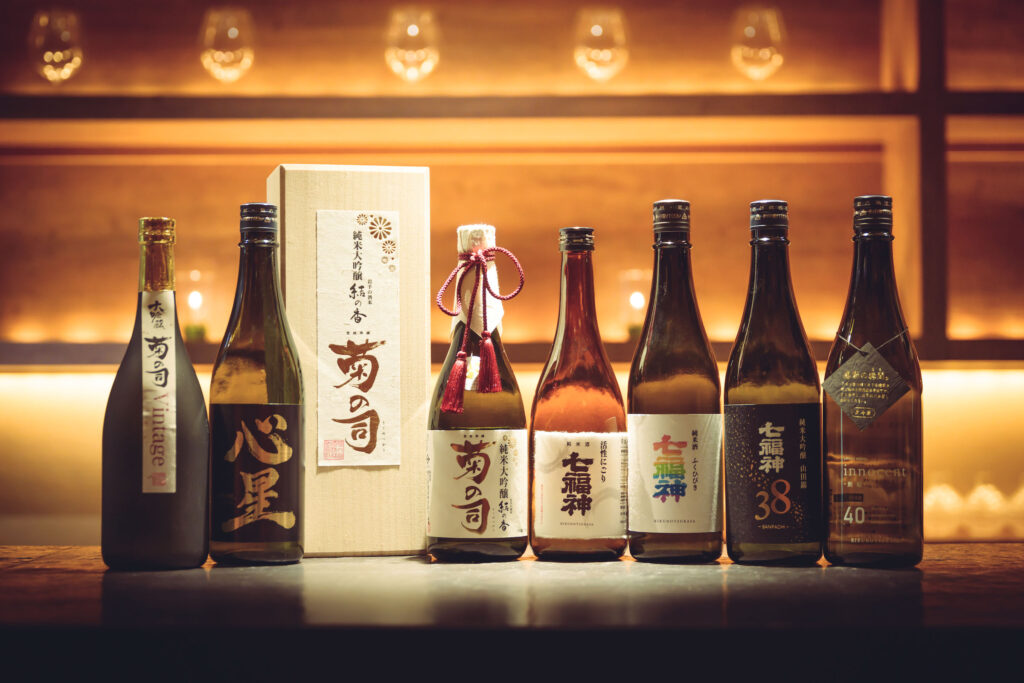
These represent the pinnacle offerings from the revitalized Kiku no Tsukasa Shuzou, yet the Shizukuishi brewery boasts an impressive array of selections. Each sake is of such exceptional quality in terms of texture, richness in flavor, and the finesse of its finish that one might question whether they are priced accurately.
Furthermore, they aim to enhance the visitor experience in the future. When talking with Yamada-san, she casually mentions plans, schedules, and aspirations for the future, so it’s uncertain how much can be disclosed here. However, they are considering initiatives such as brewery tours, tasting sessions at the shop, and agritourism experiences where visitors can participate in activities from rice harvesting to sake brewing.
“I believe there are still many people who have never tried sake before. I want our sake to be their first experience.” Expressed Yamada.
In 2023, she spent half the year outside the prefecture, aiming to broaden her horizons and introduce Japanese sake to the world.
“I’ve got to do it while I still have the energy.”
She says this at just 30 years old. Given what she’s achieved in just three years, there’s little cause for concern. Often, the individual shining brightly can be unaware of their own radiance. While some may label the sake landscape and industry as declining, amidst it all, with Kiwako Yamada at the helm, Kiku no Tsukasa Shuzou shines as a rising sun.
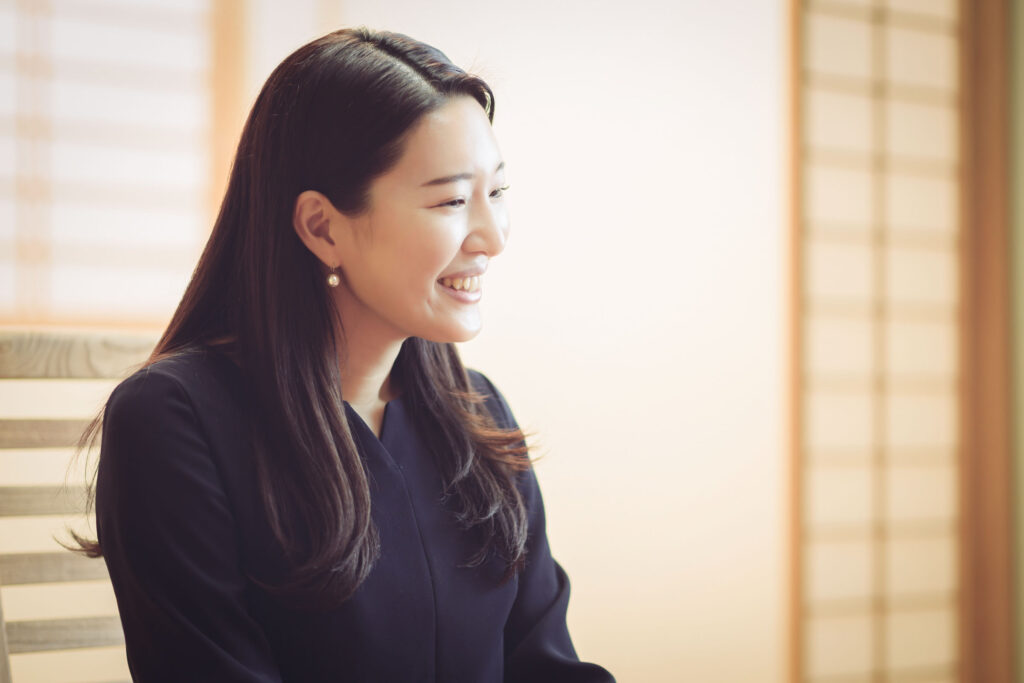
Kiku no Tsukasa Shuzou Sake Brewery Co., Ltd. Address: 11-1 Nagayamaoinuzawa, Shizukuishicho, Iwate Gun, Iwate Prefecture Website: https://www.kikunotsukasa.jp/


